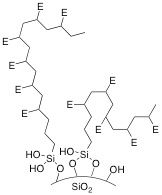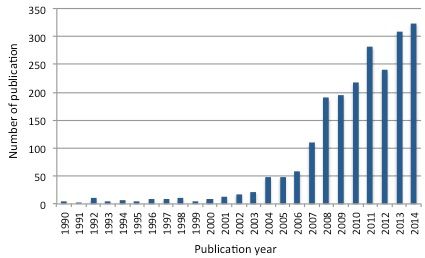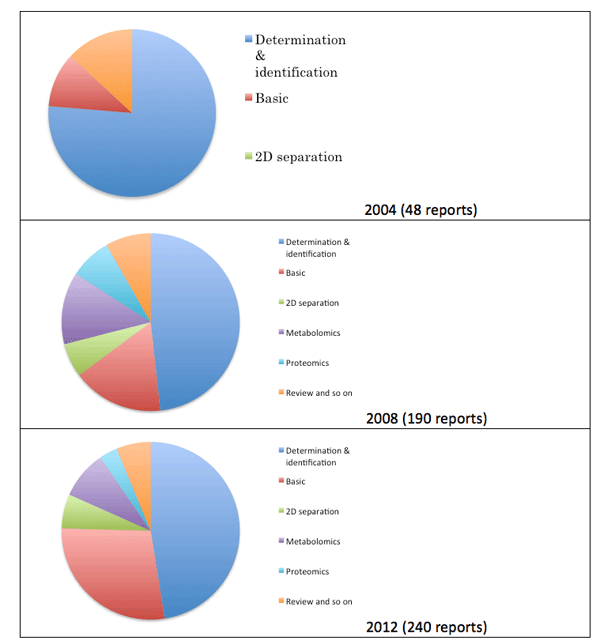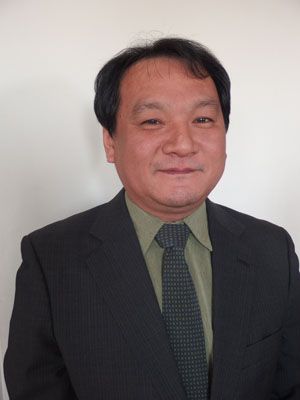The Rise of Hydrophilic Interaction Chromatography (HILIC)
Hydrophilic interaction chromatography (HILIC) is becoming more popular. Dr Tohru Ikegami, from the Department of Biomolecular Engineering, Kyoto Institute of Technology in Kyoto, Japan, reveals more about the evolution of HILIC, important new developments, and tips on how to get the most from this technique.
Q. Your group began using HILIC in proteomics research. Why are you using HILIC in this field, and why has HILIC attracted more attention recently?
A: Our research group embarked on a project to investigate comprehensive proteomics in 2002. We started to prepare monolithic silica columns with reversed-phase, ion-exchange, and chiral stationary phases. The subject of the project was application of monolithic silica columns to comprehensive proteomics and metabolomics, therefore, the target analytes were peptides, nucleotides, saccharides, and their derivatives. As a result, we needed several separation modes. During the research, we tried to transfer the polyacrylamide gel electrophoresis (PAGE) separation (a widely used technique to separate biomacromolecules, such as proteins, DNA, and RNA, by the difference of their electrophoretic mobility) to monolithic silica columns, and functionalized the monolith by on-column polymerization of acrylamide.
Polyacrylamide was supposed to reduce nonspecific adsorption of proteins onto the silica surface. This column had HILIC functionality, but it was not until later that we noticed that there was a technical term, “hydrophilic interaction chromatography” (HILIC), to describe this column. We learnt this from the first article on HILIC by Alpert (1), and from a great review by Hemström and Irgum (2).
As our research interests are focused on the preparation of columns with novel stationary phases and improvement of their separation efficiency, we required a universal test scheme of the “homemade” HILIC columns to evaluate them, and to compare them with commercially available columns. It took a long time to select probes for the test, and during the research we were attracted to HILIC, in terms of the more complex characteristics than reversed-phase separations (3).
After fixing the test scheme of HILIC columns, we evaluated many commercially available columns, and noticed that they could be separated into two groups: one group has functionalized by silylating reagents to form a relatively thin water-enriched layer, and the other has polymer chains immobilized on silica supports that take up water from the mobile phase, resulting in a thicker and more stable water-enriched layer than before. Stationary phases functionalized by silylating reagents contain a hydrogen-bond donor such as –OH and –NH2 groups, though zwitterionic functionality, such as sulphobetaine and phosphobetaine, are also available in this form. Hydrogen-bond donors can be bound by the reaction of the silica and silane (silylating reagents). RSi(OR’)3 groups possessing these functionalities are shown as E on the alkyl group (Figure 1[a]). They showed poor hydrophilicity in terms of retention of uridine (non-ionic hydrophilic compounds), and the origin of their retention is mainly based on ion-exchange interaction by silanol groups (SiO–: pKa of SiOH is around 5, and under weakly acidic conditions, they can be cation-exchange group) or amino/ammonio groups. Their selectivity for structural differences is generally lower than that of stationary phases functionalized with polymers.
Hydrogen-bond acceptors such as –CO2H, -CONH2, and -SO3H are sometimes difficult to incorporate on the R group of silylating reagents because of the limitations of the organic synthesis technique. So they were bound to silica by the polymerization reaction of monomers containing these groups (E). Compounds with zwitterionic functionality, such as sulphobetaine and phosphobetaine, are also bonded onto silica by polymerization (Figure 1[b]). Thus, sulphobetaine and phosphobetaine-bonded phases are available in both silylanized and polymerized forms. Though they possess the same functionalities, their separation characteristics are significantly different. Stationary phases functionalized with polymers displayed better hydrophilicity in terms of retention of uridine, and better selectivity for the structural difference of the test analytes.
Figure 1: (a) Stationary phases functionalized by silylating reagents. E stands for âOH, âNH2, sulphobetaine, and phosphobetaine. (b): Stationary phases functionalized by polymers. E stands for amide, carboxylic acid, sulphonic acid, sulphobetaine, and phosphobetaine.


Figure 1: (a) Stationary phases functionalized by silylating reagents. E stands for –OH, –NH2, sulphobetaine, and phosphobetaine. (b): Stationary phases functionalized by polymers. E stands for amide, carboxylic acid, sulphonic acid, sulphobetaine, and phosphobetaine.
Figure 2 shows the number of publications on HILIC from the first year of the separation mode, 1990, to 2014 (until 2008, the data was taken from a same graph by Lämmerhofer (4), and later, search results by SciFinder were used). There were two drastic changes in 2004 and 2008.
Figure 2: Number of publications on HILIC (1990–2014).

In 2004, a zwitterionic (ZIC)-HILIC column became available, and in 2008, the Chinese milk scandal escalated (milk, instant formula, and other foods containing milk were adulterated with melamine) and HILIC became an important tool for melamine analysis. Melamine was well retained on HILIC columns, and many laboratories subsequently used it to test the safety of food samples. After 2008, the number of publications was around 200 per year; in the past two years it has reached 300 per year.
Q. Are there any other trends in the use of HILIC that you have noticed?
A: HILIC has been used mainly in the analysis of pharmaceutical drugs. In 2008, “omics” research increased drastically because of the good compatibility between the mobile phase systems of HILIC columns to the ionization technique in liquid chromatography–mass spectrometry (LC–MS). High orthogonality in separation characteristics of HILIC with reversed phase separation meant that 2D HPLC became attractive for the improved separation of complex mixtures. Reports on novel HILIC stationary phases and study on the separation mechanism have increased too. This trend continued into 2012 and many researchers chose HILIC to separate complex biomolecules, and to simultaneously determine and identify small hydrophilic molecules (sometimes metabolites of pharmaceutical compounds, active components of herbs, and natural toxins in foods) as shown in Figure 3. The availability of many HILIC columns, even for UHPLC systems, has increased, and accumulated examples of HILIC separations has led to better accessibility for researchers in many fields.
Figure 3: Three radar graphs of research subjects in HILIC research.

The number of researchers and users of HILIC is significantly increasing. But I still feel that HILIC is less popular than reversed-phase separation (for example, many researchers are using HPLC in the department I belong to, but I do not hear of anybody using a HILIC system), but it has the potential to be an alternative separation mode to reversed-phase LC. Reversed-phase LC can separate almost all analytes imaginable, if the proper derivatization reaction is added to “difficult analytical targets”. Metabolomics will be an important field for HILIC because it can separate a complex mixture of hydrophilic compounds. In the case of saccharides, derivatization sometimes leads to a more complex mixture, when the modification process is undergone partially. Imagine acylation of glucose (ether linkage formation is also OK) needs to derivatize for better detection. There are five OH groups, and a large amount of derivatization reagents is added, but it is very difficult to complete such organic reactions in 100% yield. If one OH remains intact, possible isomers should be five. Therefore we have to separate and identify at least six derivatized glucose. In the case of disaccharides, trisaccharides, and longer analogs, the number of incomplete derivatization isomers can be larger. Derivatization of analytes can increase the complexity of the sample.
Q. Do you have any advice for anyone new to HILIC?
A: Understanding the HILIC separation mechanism is important. The stationary phases of HILIC concentrate water from mobile phases, as well as buffer salts. Beginners should read articles by Dinh and Irgum (5), and McCalley (6). It should be noted that conditioning to equilibrate HILIC columns may take longer than for reversed-phase columns (3). To shorten the conditioning time, the use of a higher concentration buffer will help. This appears to be very important for gradient separations, because I receive many questions (or complaints) on unstable retention of HILIC systems with an impatient time schedule for equilibration. Addition of buffer salts to the mobile phase is very important, particularly for analytes possessing amino/ammonium functionality, and/or acidic groups.
For method development, there is a good protocol to develop an analysis method by Elfakir et al. (7), though I recommend 80% or 85% acetonitrile for the first test, instead of 75% in the original scheme. The first column used should be either an amide type or zwitterionic type. They show the best retentivity or the best selectivity in the test scheme (3). HILIC involves much stronger intermolecular interaction, such as hydrogen bonding and Coulombic interaction, than reversed-phase separation. It results in slower partition equilibrium between stationary and mobile phases. Too rapid separation will decrease separation efficiency easily because of the larger C term in the van Deemter equation. In general, separation efficiency in HILIC is worse than that by reversed-phase LC.
Solvents to dissolve samples also play an important role in determining peak shape (8). A higher concentration of water in the sample solution can result in unexpected problems such as an ugly peak shape, and in the worst case, no peak was found when water was used as a sample solution. The sample should be dissolved in acetonitrile, or acetonitrile–water (90:10, w/w). The use of dimethylsulphoxide, DMSO, is sometimes recommended, and sometimes advised to avoid.
Q. Are there any common misconceptions surrounding HILIC?
A: There is a misconception surrounding HILIC separation on unmodified (bare) silica columns. This could be a result of the interpretation of “What is HILIC?”, but bare silica columns involve little hydrophilic partition for their retention mechanism. Using our test scheme (3) and the QSRR (quantitative structure-retention relationship) study by Schuster and Lindner (9), it was found that retention on bare silica columns depends on cation-exchange interaction in the main. So, hydrophilic molecules that do not possess cation-exchanging functionalities, such as saccharides, could not be retained very well on bare silica columns. Fortunately, many biomolecules and pharmaceutical compounds contain amine functionality, and could be separated on bare silica columns.
Similarly, 3-aminopropyl group modified columns work as anion-exchange columns, and hydrophilic partition is not a main component of their retention. Some researchers complain as “our target analyte is very hydrophilic, but it is not retained well on a HILIC column”. Sometimes, selection of a column does not match with the analytes, and the problem may arise from the misunderstanding of the retention mechanism of HILIC.
Functionality in HILIC stationary phases has little effect on retention, when analytes are hydrophilic and possess less ion-exchange nature. We separated several uridine derivatives on diol, sulphobetaine, and phosphocoline functionalized columns, and obtained similar retention and elution order. These columns showed similar selectivity for the test analytes, which means the difference of the functional groups has little influence on retention when the samples were only hydrophilic and not ionic.
Q. You recently performed work involving HILIC using a meter-scale monolithic column for proteomics using LC–MS. What were your findings?
A: This was a collaboration with Prof. Y. Ishihama at Kyoto University (10). A long column can generate ultrahigh separation efficiency (in our findings, a 14.5 m monolithic silica column generated N = 2,000,000 and more, even for retained analytes), and it can increase peak capacity of the one-shot separation (11). As a result, the number of proteins identified increased to 1881 on a 350 cm column, compared to 1482 proteins on a 100 cm column. For a proteomics and metabolomics study, several separation modes with different characteristics will be required. “Omics” study using only reversed-phase columns loses information on hydrophilic molecules that elute around column dead time. The use of HILIC–type monolithic silica columns showed high orthogonality in terms of retention tendency of hydrophilic components compared with that of the reversed-phase column (10). The number of peptides and proteins identified was 10,562 and 2605 using HILIC–MS, and 12,118 and 2529 using reversed-phase LC–MS, respectively. Over 40% of peptides identified by HILIC–MS were unique, and were not identified by reversed-phase LC–MS. In addition, average peak response was 5 times higher in HILIC–MS compared to reversed-phase LC–MS.
Q. Are there any other examples of HILIC that you think demonstrate the value of this approach?
A: I am currently preparing HILIC columns without expecting ion-exchange interaction for their retention. Such columns can retain hydrophilic but less ionic analytes well. The target of such columns will therefore be saccharides, and their derivatives. In the case of small molecules, such as thymine, uracil, and their derivatives, or pentose, hexose, and their isomers, these are not well retained even on common HILIC columns. Higher retention for such small molecules may be required for separation. It will be able to provide a significantly powerful tool for metabolomics research.
Q. Where do you hope your research with HILIC will take you in the future?
A: I hope that many researchers in the field of life sciences will recognize the usefulness of HILIC more. Our research group is trying to find a larger separation efficiency system, better selectivity for functional groups, and greater retention for hydrophilic compounds. It appears quite difficult to prepare the “ultimate column” for HILIC, so I would like to prepare several representative stationary phases for certain objectives.
Last year, a HILIC column designed by our laboratory was produced as a prototype, with the help of a company. They were tested in a wide variety of research fields such as pharmaceutical and food analysis, and fine separation of saccharides, including glycomics. It provided significant hydrophilicity in terms of retention of uridine, up to 12. Common HILIC columns give retention of uridine less than 6. It is very important to hear requests, questions, complaints, and suggestions from end-users. Now, I am waiting on responses on this column prototype from the users.
References
(1) A. J. Alpert, J. Chromatogr. 499, 177 (1990).
(2) P. Hemström and K. Irgum, J. Sep. Sci. 29, 1784 (2006).
(3) Y. Kawachi et al., J. Chromatogr. A 1218, 5903 (2011).
(4) M. Lämmerhofer, J. Sep. Sci. 33, 679 (2010).
(5) N. P. Dinh et al., J. Chromatogr. A 1320, 33 (2013).
(6) D. V. McCalley, J. Chromatogr. A 1193, 85 (2008).
(7) R.-I. Chirita et al., J. Chromatogr. A 1217, 3091 (2010).
(8) J. Ruta et al., J. Chromatogr. A 1217, 8230 (2010).
(9) G. Schuster and W. Lindner, J. Chromatogr. A 1273, 73 (2013).
(10) K. Horie et al., Anal. Chem. 86, 3817 (2014).
(11) K. Miyamoto et al., Anal. Chem. 80, 8741 (2008).

Dr Tohru Ikegami was born in 1969 in Japan. He graduated in chemistry at Ehime University in 1992, and obtained his Ph.D. in 1997 from Kyoto University, Japan, on synthesis and structural study of organobismuth compounds. He was appointed assistant professor at Kyoto Institute of Technology in 1997, and promoted to associate professor in the same university in 2008. His research interests involve the understanding of separation/retention mechanisms in LC, preparation of new stationary phases, and improvement of their separation efficiency, retention, and peak capacity.
HILIC Peptide Retention Times Predicted Using New Approach
October 29th 2024Manitoba Centre for Proteomics and Systems Biology scientists produced a new means of predicting peptide retention times for hydrophilic interaction liquid chromatography (HILIC) at acidic pH in formic-acid based eluents.
Systematic Evaluation of HILIC Stationary Phases for MS Characterization of Oligonucleotides
Hydrophilic interaction chromatography–mass spectrometry (HILIC-MS) offers a flexible and efficient alternative to ion-pairing reversed-phase liquid chromatography (IP-RPLC) for oligonucleotide analysis, with column selectivity and mobile phase pH being key factors in optimizing retention and detection.